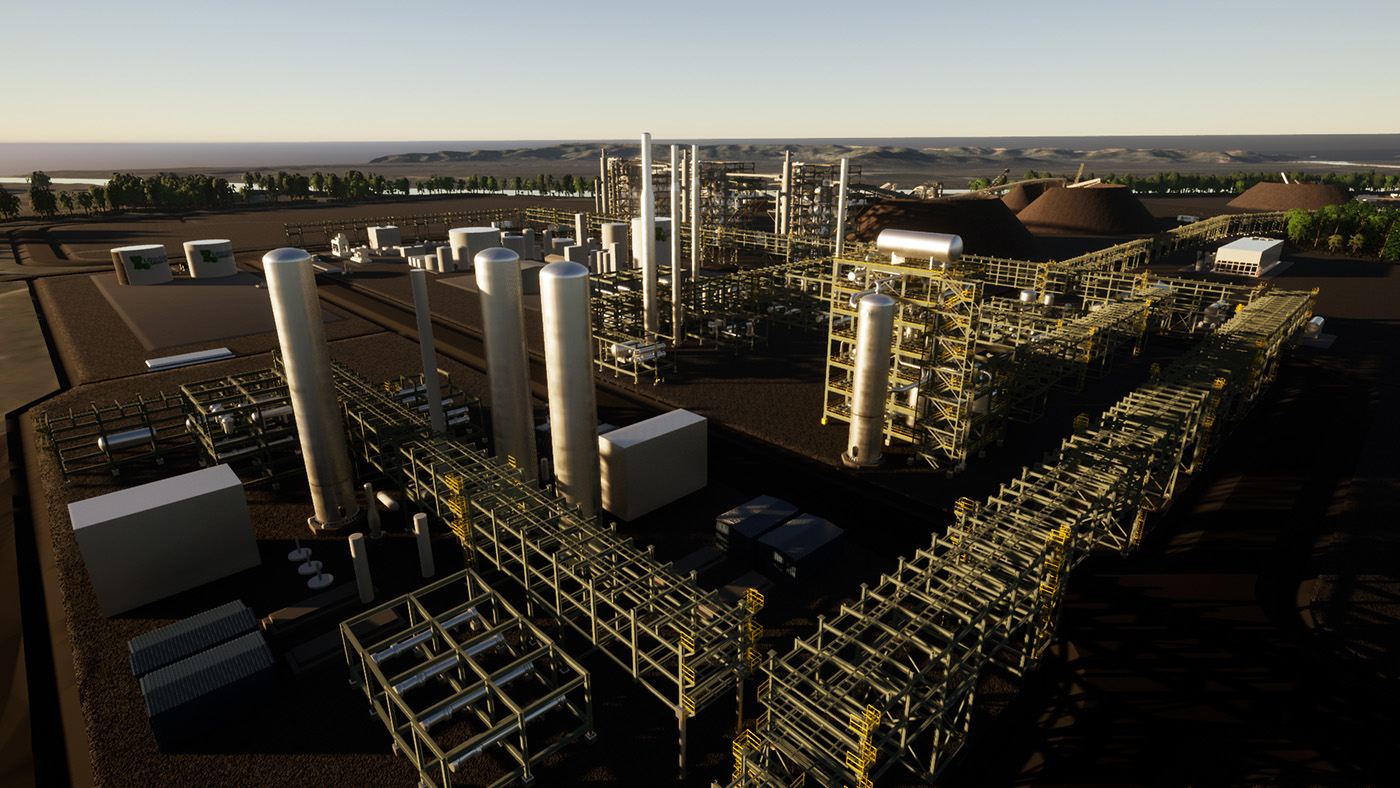With global demands for Sustainable Aviation Fuel (SAF) increasing, getting it right in terms of scalability and commercialization is crucial to advancing innovative projects. Our combination of utilizing sound, licensed technology and selecting project sites with the right geology, uniquely positions us as a leader that can truly produce the world’s cleanest SAF.
We can and have shown that ultra low carbon renewable fuels plants are possible.

We utilize well-established, sound technology from world-class licensors to efficiently and safely produce the highest quality renewable fuels. The key components of our project include: Gasification, Carbon Capture, Hydrocarbon Synthesis, Hydrocarbon Upgrading, Carbon Sequestration and an onsite Biomass Power Plant.
Gasification is the first step in the process and converts wood waste into synthesis gas (carbon monoxide and hydrogen) or “syngas”. It is a nearly two-century-old technology that can convert any carbonaceous (carbon-based) raw material, including forestry waste, into syngas, which already is the building block for synthetic fuels, lubricants, and many other existing products.
Carbon capture removes the carbon dioxide byproduct from syngas production. The carbon capture technology used in our projects will capture nearly all the carbon dioxide in a nearly 100% pure form. This will be compressed and transported a short distance to the wells, which will inject it into a geologic formation about a mile underground where it will be permanently stored by the same forces which have held oil and gas underground for millions of years. The sequestration process and operation is highly regulated by the U.S. Environmental Protection Agency and the Louisiana Department of Energy and Natural Resources and requires a special “Class VI” permit.
The hydrocarbon synthesis process combines the syngas’ carbon monoxide and hydrogen into a clean synthetic paraffin wax and oil. This technology, known as the Fischer-Tropsch Process, was developed in the mid-1920’s in Germany to produce liquid fuels and lubricants from the country’s abundant coal resources at a time when the global economy was transitioning from coal to oil. This technology has been used continuously since the 1950’s to produce synthetic fuels and lubricants.
Hydrocarbon upgrading converts synthetic paraffin wax and oil from the Fischer-Tropsch Process into liquid transportation fuels. Upgrading technology is used today in hundreds of refineries to make finished fuels like gasoline, diesel, and jet fuel. Because synthetic wax is clean and contaminant-free, the severity of the upgrading process is much less than what is required for fossil fuels. Our upgrading licensor has shown conversion of wood-derived synthetic waxes into both diesel and jet fuels meeting all regulatory requirements.
The Louisiana Green Fuels (LGF) project includes a biomass power plant which will provide “green” electric power to the biorefinery. Essentially, all of the power (86 MW) needed to operate the refinery will be produced onsite primarily from sawmill waste. As with fuel production, the carbon dioxide produced from the power plant will be captured and sequestered. Not only will the power produced be “green”, meaning it is renewable, but it will also be carbon negative.